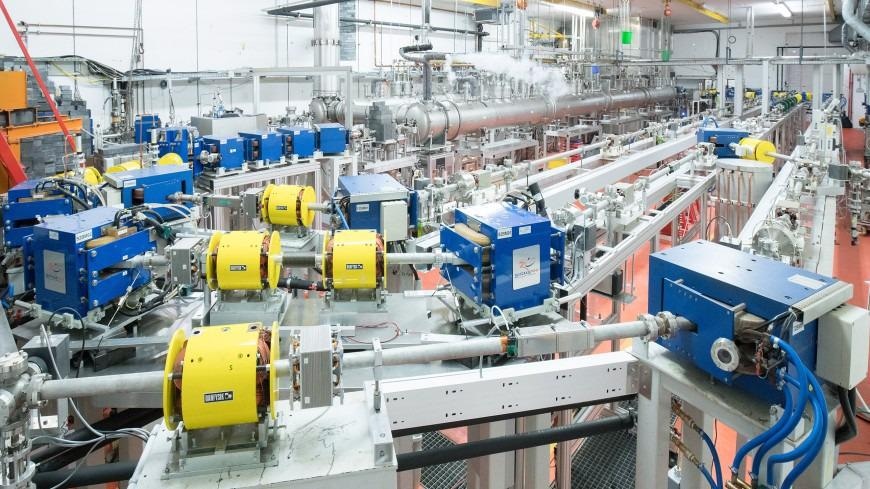The world’s first run of a multi-turn superconducting linear accelerator with substantial energy recovery was a success at Technische Universität Darmstadt. The experiment using the electron linear accelerator (S-DALINAC) at the university demonstrated that a considerable saving of accelerator power is plausible.
 The electron linear accelerator S-DALINAC at the Institute for Nuclear Physics at TU Darmstadt. Image Credit: Jan-Christoph Hartung.
The electron linear accelerator S-DALINAC at the Institute for Nuclear Physics at TU Darmstadt. Image Credit: Jan-Christoph Hartung.
Multifaceted facilities to accelerate electrically charged particles are of paramount significance for fundamental research in physics and technological uses. The creation of facilities with better beam currents and enhanced beam quality, which is essential for many research domains, is reaching economic and technological challenges.
A solution is offered by the theory of an energy-recovering linear accelerator (ERL) — where the energy, which remains in the beam after the technical or scientific procedure, is recovered and instantly utilized to accelerate more particles.
ERL technology can be utilized in an economically feasible and environmentally responsible way to deliver electron beams of maximum energy and intensity. This is precisely what is required for future research — for instance, in the field of particle physics at the European research center CERN, but also to stimulate advances in industry and medicine.
A Milestone
Therefore, the latest fruitful demonstration at the TU Darmstadt is a breakthrough: for the first time, a superconducting electron linear accelerator was effectively run in a multi-turn energy-recovery mode with a proven substantial saving of acceleration power.
The electron beam was accelerated via the main accelerator in two sequential passes to a velocity of 99.99% of the speed of light at the interaction point. It was then decelerated to the initial injection energy in two additional passes via the main accelerator.
Beam currents of nearly 8 microamperes at energies of up to 41 MeV were realized. The following deceleration stored the beam’s unused kinetic energy in the accelerator structures and thus saved over 80% of the requisite acceleration power.
The researchers were able to surpass technical difficulties during operation, like “relativistic phase-slippage” due to marginally varying velocities of the individual beams on their acceleration and deceleration paths.
Exploration into the domain of multiple-recirculating ERLs is financially supported by the German Research Foundation in the “AccelencE” Research Training Group and by the Hessian Ministry of Higher Education, Research, Science and the Arts as part of the “ELEMENTS” cluster project.